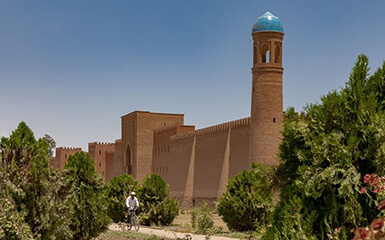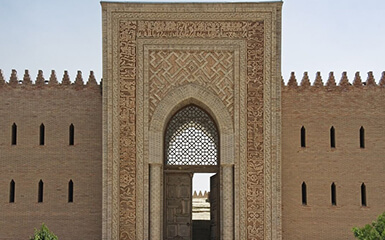Kok Gumbaz
Ajina Teppa
Ancient Panjakent
Anzob Tunnel
Beshkent Qala
Childukhtaron
Khazrati Shokh
Mug Teppa
Gharm Chashma
Hisor Historical
Haji Yaqub mosque
Hazrati-Bobo complex
Lake Iskanderkul
Kalai-Khumb
Karatag
Karon
Khishtin caravanserai
Khorog
Khulbuk
Lake Karakul
Abdullatif Sultan
Madrasai Kuhna
Abu Abdullah Rudaki
Khoja Mashhad
Khudoyor Valami
Makhmudi Azam
Mir Sayyid Ali Hamadani
Muhammed Bashoro
Sheikh Muslihiddin
Nurek Mountain Lake
Pamir
Sarazm
Sari-Khosor
Seven Lakes
Shirkent
Chiluchorchashma
Takht-i Sangin
Khulbuk – palace of the governor

Khulbuk Governor's Palace is located in the centre of the village of Kurban-Shaid, in the city of Vose, in the Khatlon Region of Tajikistan. The palace was located in the south-western part of the ancient city of Khisht-Tepa. Khulbuk, 9-12 BC. For centuries, it was a centre of the Huttal Region.
Khulbuk was the capital of the Benijurids, the Turco-Iranian dynasty, Samanid vassals and their successors, that ruled from about 847-963, until it was possibly destroyed by Mongols.
The area consists of a citadel measuring 170 x 60 meters and a lower city to the north and east of the castle. Early excavations, which began in 1953, concentrate on the castle, and the lower town has only recently been studied.
The territory of the palace complex includes the palace of the governor and adjacent areas. The caravanserai is a place where the remains of the palace bath, water pipes and drainage systems were discovered. There is also an object directly related to the ancient city – the cemetery of the Beshkento-Vakhsh culture, dated to the advanced Bronze Age (third millennium BC). In the region of Shahristan, housing chambers of archaeological research, parts of the water supply system, fortifications, etc. There is a well-preserved archaeological part of the city, with its living and industrial areas. The buffer zone includes part of it. The medieval city bordering the Surkhob and Yaksu Rivers, the steep sides of the lower terrace and the archaeological remains of the outer walls. A significant part of the buffer zone is located under a modern one-story manor-type building, where excavations have revealed objects of cultural heritage the ruins of the city bath, the mausoleum of the Khulbuk rulers, the early city cemetery. Muslim era, fortifications, canals and a medieval bridge over the Surkhob River.
Khulbuk is the archaeological remains of a city with construction, engineering and irrigation systems. The most studied object is the Khulbuk Palace, which has been regularly excavated since 1953. As a result, the Palace complex was almost completely excavated and studied. Systematic excavations of the residential and industrial sectors of the city are at an early stage.

